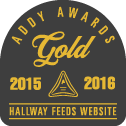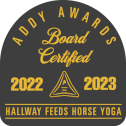Determining the Best Horse Feed this Spring
Best Horse Feed
With spring approaching, now is an excellent time to evaluate the feeding program you have in place for your horse. His needs—and therefore, the best horse feed for him—may change for a variety of reasons, including:
• The availability of more abundant pasture
• An increased level of work/activity
• Returning home after winter competitions (which could mean a different forage type or quality)
Monitor Body Condition
Of course, to determine your horse’s nutritional needs, you need to understand his body condition. Over the winter, he may have gained or lost weight, which will impact his nutrition goals. For most horses, a body condition score of 5-6 is ideal (if you’re unsure, contact one of our representatives to discuss and confirm if your horse falls into this range). If the score is lower, your horse will need additional calories; if it is higher, he will need fewer calories. Knowing this will help you choose the best horse feed for him.
Determine Energy Needs
If your horse will begin training or will have his training program amped up, he will need additional calories. On the other hand, if you have an older horse who has retired from intense training, his calorie needs are likely less than they have been in previous spring seasons.
Start with Forage
Naturally, forage should be the basis of your horse’s diet. The arrival of spring brings lush, green pasture, which can satisfy a good portion of his nutritional needs. However, new grass tends to be higher in sugar and starch (and calories) than the hay your horse has been eating over the winter. For some horses, overindulging in this new grass presents a health risk. If your horse is overweight or has a health concern like insulin resistance, laminitis, or Cushing’s disease, you will want to limit his grazing time.
Choosing the Best Horse Feed
Even with a ready supply of fresh grass, you will need to supplement your horse’s diet with a concentrate to ensure he is getting all the nutrients he needs.
If he needs additional calories, the best horse feed for him may be one of these:
• Prep 14, with 20% more calories than conventional textured feeds. Also, it’s fortified with Stamm 30 to ensure the proper level of vitamins, minerals, and critical micronutrients. Prep 14 is often the best horse feed for horses in training, underweight horses, horses with gastric ulcers, and horses being prepared for sale.
• Fibrenergy, which provides extra calories with less sugar and starch. Like Prep 14, Fibrenergy is fortified with Stamm 30 for the vitamins, minerals, and micronutrients essential to a horse’s health. We custom-crafted Fibrenergy for the needs of competitive horses, like jumpers, hunters, and reiners; however, it is also ideal for horses who need additional calories, as well as any horse requiring a low non-structural carbohydrate feed.
• Protenza, which provides a 20% boost in energy over many sweet feeds. This calorie-dense formula is fortified with Stamm 30 and is particularly good for jumpers and hunters, as well as horses competing in Western disciplines or polo.
• Race 13, which we’ve formulated for equine athletes. This fully fortified, high-energy feed also contains Stamm 30. Backed by research and testing, Race 13 is considered one of the industry’s best feeds for performance horses.
• Distinguished, which provides a boost in calories and is designed to meet the nutritional needs of senior horses. Formulated with Stamm 30, as well as higher levels of antioxidants, Distinguished may be the best horse feed for your horse’s needs if he is in his “golden years.”
However, if your horse is already getting the calories he needs from his forage intake, the best horse feed may be a ration balancer. We recommend:
• Stamm 30, which can be fed to mature easy keepers, to developing horses dealing with orthopedic disease, or to performance horses who need to maximize their nutrient intake.
• Pure & Simple Balancer, a non-GMO, fully fortified balancer with essential amino acids, biotin, Vitamins E and C, and essential minerals.
• Kentucky Mare Cubes, which provides the necessary protein, vitamins, and minerals to foals, weanlings, yearlings, and gestating or lactating mares who are getting the calories they need from forage.
Make a Gradual Change
If the best horse feed for your horse’s situation is different than his current feed, make sure to change over gradually. Introduce a little bit of the new feed into his current diet, increasing the amount of the new feed each day over 7 to 10 days.
We’re Here to Help
Still not sure which is the best horse feed for your horse’s needs? We are happy to help. Give us a call or shoot us an email, and we’ll help you determine which of our custom feeds will give him just the right nutrition.








